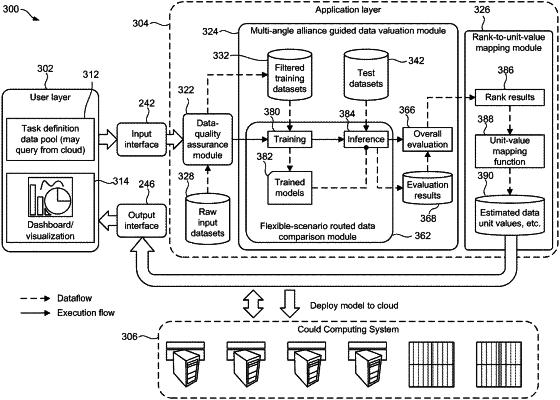| CPC G06F 18/214 (2023.01) [G06F 18/2113 (2023.01); G06F 18/23 (2023.01); G06N 20/00 (2019.01)] | 23 Claims |

|
17. A computerized method for sharing data from one or more data providers to one or more data consumers, the data comprising one or more input datasets each provided by a respective one of the one or more data providers, the method comprising:
obtaining one or more training datasets from the one or more input datasets, each of the one or more training datasets corresponding to a respective one of the one or more input datasets;
evaluating the one or more training datasets for generating one or more quality scores, each quality score associated with a respective one of the one or more training datasets;
generating a unit value for each of the one or more input datasets based on the one or more quality scores;
receiving incentives from the one or more data consumers for acquiring at least a portion of the input datasets;
distributing the received incentives to the one or more data providers based on the one or more unit values and the at least portion of the input datasets; and
sharing the at least portion of the input datasets with the one or more data consumers;
wherein said evaluating the one or more training datasets comprises: evaluating the one or more training datasets using a first evaluation method comprising:
training an artificial intelligence AI model using the one or more training datasets and a machine learning algorithm to obtain one or more first trained models, and
generating each of the one or more quality scores based on one or more first predictions generated by a corresponding one of the one or more first trained models using one or more test datasets received from the one or more data consumers.
|